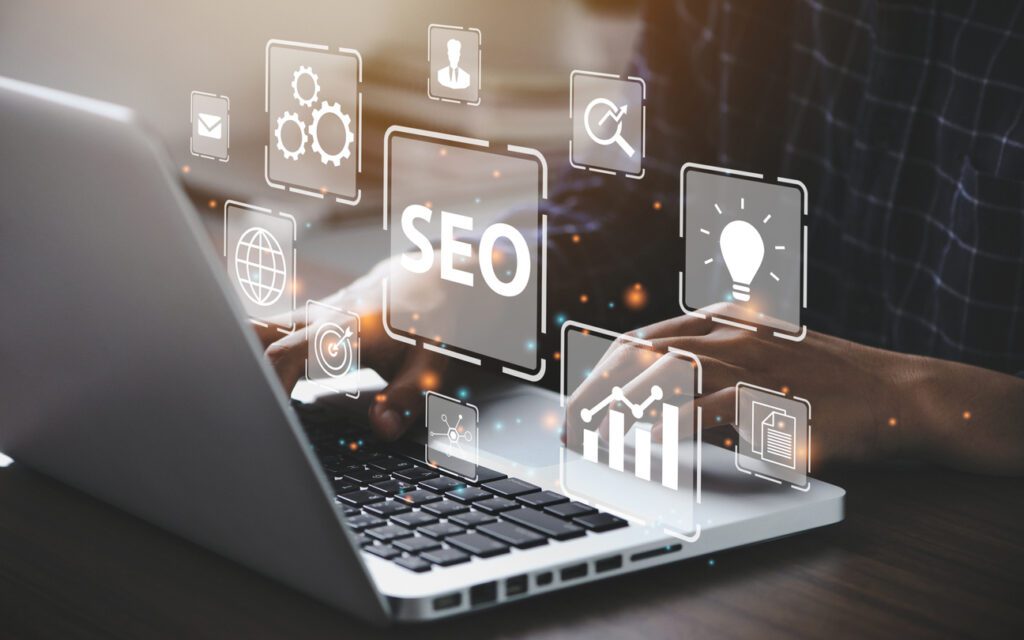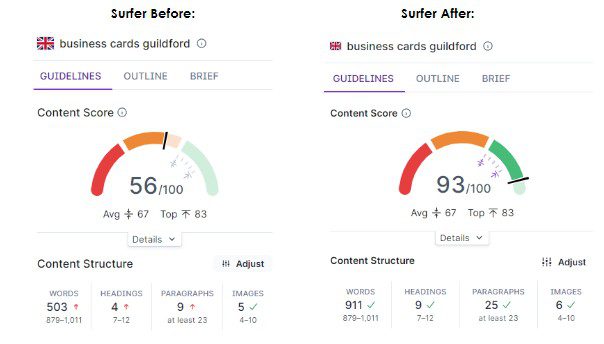Welcome to Outrank’s ultimate guide to on-page SEO! In this comprehensive blog post, we will explore the ins and outs of on-page SEO, why it holds immense importance for your website, and share valuable tips to optimise your web pages effectively. Whether you are carrying out the work yourself or utilising the services of a digital marketing agency, we are sure you will find some useful information here!
What Is On-Page SEO?
On-page SEO encompasses a range of techniques and strategies that centre around enhancing both the content and HTML source code of a page. The primary goal is to help search engines better understand your content’s relevance to users’ search queries. By doing so, you increase the likelihood of your web pages ranking higher in search engine results pages (SERPs), leading to a greater influx of organic traffic.
Unlike off-page SEO, which involves external factors like backlinks, on-page SEO focuses on optimising elements within your website that are entirely within your control. On-page SEO can be carried out at many levels; at a basic level, you can focus on adding quality content and imagery, whilst more advanced techniques include comprehensive internal linking strategies and on-page structuring.
Why Is On-Page SEO So Important?
The importance of on-page SEO cannot be overstated. When you optimise your pages effectively, search engines can more accurately interpret your content, making it visible to the right audience. This not only boosts your website’s visibility but also drives organic traffic, which is typically more relevant and engaged with your content.
In addition to improved rankings and traffic, on-page SEO significantly contributes to a better user experience. By crafting content that aligns with users’ search intent, you increase the likelihood of visitors spending more time on your website, exploring various pages, and ultimately converting into leads or customers. Search engines consider user engagement metrics like bounce rates and time on the page when determining website rankings, making on-page SEO an essential component of your digital marketing strategy.

Crafting The Right Content
Content forms the foundation of on-page SEO. When creating content, it’s crucial to consider several key factors that will enhance your SEO efforts.
Firstly, conducting thorough keyword research with tools such as Semrush is vital. Identify relevant and high-traffic keywords that align with your content’s focus and incorporate them naturally into your content, headings, and meta tags. Strive to create original, valuable, and informative content that caters to the needs and interests of your target audience. High-quality content is more likely to be shared and linked to by others, which can significantly impact your SEO.
Furthermore, the formatting of your content plays a pivotal role in improving user experience and SEO. Organise your content using clear headings, subheadings, bullet points, and paragraphs. This not only makes your content easier to read and digest but also helps search engines understand the structure and hierarchy of your content. There are countless tools you can use for content writing, each with its own unique purpose. At Outrank, we use Surfer for all of our content creation, as this helps us to benefit from other high-ranking websites already found on SERPs. Once your content is created, check it for grammar and spelling issues using tools such as Grammarly, as this will find issues you may have missed.

Titles And Headings
Optimising page titles (H1 tags) and headings (H2, H3, etc.) is a fundamental aspect of on-page SEO. These elements serve readers and search engines by providing valuable information about the page’s content and the overall structure, for example, using a H2 and then a H3 below shows that the H3 may be an off-shoot from the main topic mentioned in the H2 heading.
Including your primary target keyword in the page title and using related keywords and phrases in subheadings can improve search engine visibility. However, it is essential to maintain natural and relevant titles and headings that accurately represent your content. It is often beneficial to include frequently asked questions within headings so that search engines can direct people to your page when they ask the question. You can see where we have done this with headings such as ‘What Is On-Page SEO’, telling search engines exactly what questions this blog is answering.
Imagery And Alt Text
Visual content, such as images and infographics, enhances the overall user experience. Properly optimising images with correct sizing and descriptive alt text is crucial for on-page SEO.
Optimise your images by compressing them to reduce page loading times while preserving quality. Use appropriate image formats like JPEG, PNG, or WebP to ensure compatibility across different devices and browsers. If you are sourcing your images from a reputable library such as iStock or Adobe Stock, you will likely find that the images are of very high quality and the files sizes will be large. Choosing the right file type and then compressing the image is vital here to ensure the image is suitable for the pages SEO needs.
Incorporate descriptive alt text for images, providing a concise description of what the image portrays. Alt text not only helps search engines comprehend the content but also improves accessibility for visually impaired users, making your website more inclusive.
Create Simple And Effective URLs
URL structure is another critical element of on-page SEO. A well-structured URL is not only user-friendly but also benefits search engines. Keep your URLs short, simple, and readable to enhance user experience. Avoid using complex characters or long strings of numbers that can confuse visitors. A user should be able to look at your URL and understand exactly what the page is about without having to think too much.
Include your target keyword in the URL, if relevant, to signal the page’s content to search engines and improve its visibility.
Ensure Your Pages Have The Right Internal Links
Internal linking is an often-overlooked aspect of on-page SEO that can significantly impact your website’s performance in search results.
Ensure your internal links are relevant and connect to other pages within your website that share related topics or themes. When search engines discover these links, they can establish relationships between different pages, enhancing the overall SEO value of your site. These links are also vital to the user journey, as they can direct readers to pages that are relevant to their interests and alsoto contact forms if they wish to make an enquiry.
Use descriptive and relevant anchor text for your internal links. Avoid generic terms like “click here” and instead use anchor text that accurately reflects the content of the linked page. A link that leads to a conservatory installation page may have the anchor text as ‘quality conservatories’, to show what the page is all about.
Make The Most Of Your On-Page SEO
Mastering on-page SEO is essential for improving your website’s search engine rankings, organic traffic, and user experience. By focusing on content quality, optimising titles and headings, using imagery with descriptive alt text, creating simple URLs, and implementing effective internal linking, you can take significant strides towards boosting your website’s visibility and success in search engine results. Remember that on-page SEO is an ongoing process, so keep refining and updating your strategies to stay ahead of the competition. Happy optimising!


